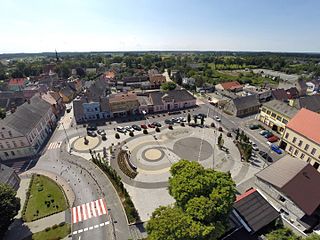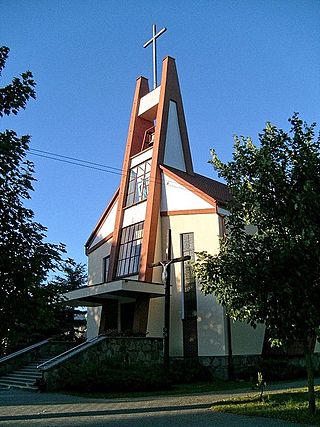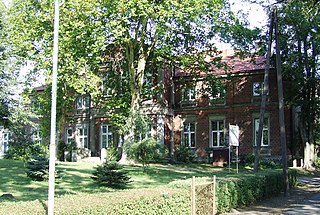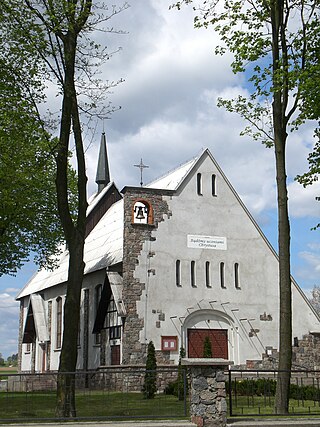Detailed timeline
Links to pages that are also "key events" (see above) are depicted in bold.
August
17 August
- Following German advances that started in early 1939, Soviet Foreign Commissar Vyacheslav Molotov, after the failure to find a diplomatic agreement with the Allies, agrees to specific diplomatic talks with the Germans. [1] : 78
21 August
- Joachim von Ribbentrop, the foreign minister of Germany, arrives in Moscow for negotiations. [1] : 78
23 August
- Following intense German-Soviet negotiations, the Molotov–Ribbentrop Pact is finalized (to be publicized on 24 August). The two powers agree to a broad economic exchange and to mutual military non-aggression. In a secret additional protocol, the two powers approve of each other's expansionist ambitions in Central Eastern Europe. Poland is divided (along the line of the San, Vistula and Narew rivers) into a German and Soviet sphere of influence. [1] : 78f.
25 August
- Orders are issued to German forces to commence the invasion on 26 August. [2] : 103
- With the Anglo-Polish alliance , [2] : 103 the United Kingdom reaffirms its guarantee of independence issued on 31 March 1939. [3]
26 August
- The scheduled invasion (see 25 August) is called off at the last possible moment to buy the Germans more time. [4] : 16
- The cancellation of the invasion orders fail to reach all German units in time; German saboteurs carry out a bombing attack at the Jablunkov Pass in what becomes known as the Jabłonków incident . [5] : 47
- Italian dictator Benito Mussolini sends a long list of equipment and support requests to German dictator Adolf Hitler to create an excuse for Italy to stay neutral in the imminent war. [6] : 160f.
28 August
- The Polish inspector-general requests the President to issue orders for general mobilization. [7] : 110
- In the Tarnów train station bombing , two suitcase bombs planted by German agents at Tarnów railway station detonate and kill 22 people and injure 35 more. [8] : 116
29 August
30 August
- Polish general mobilization ordered again, to go into effect on 31 August. [7] : 110
- The Polish government announces that it has carried out defensive mining operations in its territorial waters. [5] : 49
- The Polish navy launches the Peking Plan to evacuate its three main destroyers to the United Kingdom. [2] : 103f.
31 August
- Hitler gives final approval to the invasion, to begin on the morning of 1 September; SS instructed to executed "Operation Himmler" to create various pretexts for invasion. [2] : 106f.
- In the night from 31 August to 1 September, the SS instigates a false flag attack (" Gleiwitz Incident ") against Gleiwitz Radio Station and sends broadcasts in the Polish language to create a pretext for German invasion. [9] : 668
- Germany issues a last-minute ultimatum to Poland (but does not provide either Poland or the United Kingdom with enough time to formulate diplomatic responses). [1] : 83
September
1 September

- Around 04:30, Stukas of III./KG1 attack Polish positions at Tczew bridge in the unsuccessful attempt to preempt the demolition of the bridge by Polish forces. [2] : 107
- At 04:45, Schleswig-Holstein opens fire against the Polish defenders at Westerplatte, beginning the Battle of Westerplatte . [10] : 82
- Luftwaffe forces undertake the Bombing of Wieluń . [11] : 389
- At 05:00, 50,000 Slovak soldiers cross the Polish border, beginning the Slovak invasion of Poland .
- German 3rd Army advances with its left flank (I Corps, Corps Wodrig) against Polish defenses at Mlawa (" Battle of Mlawa "), defended by the Polish 20th Infantry Division. [2] : 113
- German 4th Army advances into the "Danzig Corridor"; a cavalry counterattack (" Charge at Krojanty ") by the 18th Uhlans gives birth to the myth of Polish cavalry attacking German tanks. [12] : 509f.
- German 8th Army and German 10th Army advance from Silesia and are delayed by rearguard actions of withdrawing Polish defenders. [13] : 122
- XVI Corps (10th Army) meets the Volhynian Cavalry Brigade (supported by armored train Śmiały ) in the Battle of Mokra and inflicts large casualties. [12] : 307f.
- German 10th Army advances against Polish defenders of 7th Infantry Division in the Pryzstain sector. [14] : 153
- German public reactions to the outbreak of war are less than enthusiastic. [15] : Ch.III
- Soviet Union allowed the Germans to use radio stations in Minsk to enable them to covertly instruct German pilots bombing Poland. [16]
2 September

- German naval forces under Günter Lütjens exchange fire with Wicher , Gryf and Polish coastal batteries; Leberecht Maaß (Ger.) damaged, Wilk (Pol.) damaged by bombs, Mazur (Pol.) sunk by Stukas of the 1st Air Division. [17] : 12
- German 3rd Army regroups after surprising Polish resistance in the northern sector (during the Battle of Mlawa); Panzer Division Kempf assigned to Wodrig Corps to shift the gravity of attack. [2] : 113
- XXI Corps (3rd Army) fights off a Polish counterattack towards Grudziądz. [18] : 80
- German 4th Army crosses the Brda river. [18] : 81
- In Stutthof (formerly Free City of Danzig), a prisoner-of-war camp for Polish prisoners is opened by the German authorities. This camp eventually becomes Stutthof Concentration Camp in 1942. [19] : 7
- German troops perpetrated massacres in Bukownica, Gostyń, Łaziska Dolne, Łaziska Średnie, Parzymiechy and Zimnowoda, killing over 170 Poles, including women and children. [20]
- The Luftwaffe bombed a train with civilian refugees from Krotoszyn in Koło, killing 300 people. [21] [22]
3 September
- During the withdrawal of Polish troops from Bydgoszcz, local Germans opened fire on Polish soldiers and civilians, forcing them into a defensive battle in which several hundred people were killed on both sides. The event was referred to as the Bloody Sunday by the propaganda of Nazi Germany, with number of German victims upped to 58,000 by German propagandists. [23] : 26
- Bombing of Skierniewice by the Luftwaffe begins. [24]
- German troops perpetrated massacres in Albertów, Imielin, Jankowice, Kobielice, Krzepice, Lędziny, Mysłów, Nierada, Pińczyce, Święta Anna, Zawiść, Zgoń and Zrębice, killing 320 Poles, including women and children. [25]
- Soviet Defense Commissar Voroshilov orders seven military districts in the western Soviet Union to increase their combat readiness. [26] : 125
4 September
- Schleswig-Holstein intensifies its bombardment (supported through 21cm howitzers brought from East Prussia) against Polish defenders at Westerplatte as the Battle of Westerplatte continues. [27] : 31
- German 8th Army captures five bridges across the Warta river intact and begins its river crossing. [13] : 122f.
- Polish high command assigns the 41st Infantry Division and 44th Infantry Division, both still in deployment and unready for combat, to frontline duty to throw them into action. [14] : 357
- German troops carried out massacres in Cielętniki, Częstochowa , Kruszyna, Pasternik, Pławno, Pszczyna, Siewierz, and Sosnowiec, killing over 350 Poles, including women and children. [28]
- Start of the evacuation of the Polish gold reserve from Warsaw to Lublin. [29]
- The Luftwaffe bombed a train with civilian refugees from Ciechanów in Łukowo. [21]
5 September

- Edward Rydz-Śmigły orders a general withdrawal by Army Prusy, Army Kraków, Army Poznań and Army Łódź to the east bank of the Vistula and behind the Dunajec. [2] : 125
- Rydz-Śmigły orders a counterattack by Wyszków Operational Group with 1st Legions Infantry Division and 33rd Infantry Division at 18:15, though his order does not reach the Operational Group's commander Kowalski until 06:00 the next day. [14] : 247
- German troops perpetrated a massacre of over 80 Polish POWs in Serock (see German atrocities committed against Polish prisoners of war ). [30]
- Battle of Kazimierza Wielka between the Polish 55th Infantry Division and Wehrmacht, town captured by the Germans. [31]
- During the night of 5/6 September, the Polish defenders of Różan evacuate their positions. [14] : 248
6 September
- Wyszków Operational Group begins its counterattack (as ordered on 5 September) towards Pułtusk against I Corps; 1st Legions Infantry Division and 61st Infantry Division clash. [14] : 247
- Corps Wodrig forces the Germans' way across the Narew river; the corps subsequently wastes time with preparations to attack Różan (already evacuated by Polish defenders during the night of 5/6 September). [14] : 248
- XXII Corps severs the line between Warsaw and Częstochowa. [32] : 109
- Krakow is captured by German forces. [15] : Ch.III
- The Polish air force attempts a general offensive and musters 164 sorties with 13 victories and nine planes lost. In the evening, orders are given to move all remaining Polish fighters to Lublin, where 88 fighters are subsequently formed into the newly-improvised Pursuit Brigade. [14] : 160
- The Polish government and its accredited ambassadors evacuate Warsaw and relocate to Lublin. [32] : 102
- Poles evacuate the arms factory in Starachowice to Kowel; Germans attack the Wanacja suburb of Starachowice, and then murder over 20 civilians. [33]
- German troops perpetrated a massacre of Polish POWs, including 19 officers, in Moryca and Longinówka, and massacres of 56 Polish civilians in Będzin and Uniejów. [30] [34]
- During the night of 6/7 September, the Wyszków Operational Group's progress is significantly hampered by logistical chaos when the 33rd and 41st Infantry Divisions become hopelessly entangled with each other, causing mass confusion among the troops. [14] : 247
7 September
- At 04:15 in the morning, Schleswig-Holstein opens the final bombardment against Westerplatte, whose defenders surrender around 10:15. [27] : 32
- Germans enter Starachowice and launch an attack on Ostrowiec Świętokrzyski. [35]
- German troops carried out massacres in Mordarka, Wągrowiec and Wylazłów, killing 33 Poles and 9 Jews. [36] [37]
- Decision of the German Ministry of the Interior to dissolve the Union of Poles in Germany and close Polish minority schools, printing houses, and financial and cooperative institutions. [38]
8 September
- German forces reach the outskirts of Warsaw; [15] : Ch.III probing attacks by the 4th Panzer Division, which had judged Warsaw to be undefended the previous day, meet heavy Polish resistance in the Ochota suburb. [12] : 308
- At 5:30 a.m., German forces launched an assault on Kłecko, capturing it in the evening, suffering heavy losses in the face of fierce Polish defense. [39]
- German troops carried out massacres in Bagatele, Balin, Chechło, Czekaj, Dominikowice, Koźle, Lipsko, Międzylesie, Mszczonów, Siemianowice Śląskie, Tyszki-Ciągaczki, killing 179 Poles, including 11 POWs, and 60 Jews. [40] [30] [41] Only in the Ciepielów massacre soldiers of the German 29th Infantry Division murdered some 300 Polish POWs. [30]
- In preparation for the Soviet invasion of Poland, the NKVD ordered the establishment of operational groups, which would commit massacres of Polish POWs and civilians. [42]
9 September

- 4th Panzer Division repeats its attack against Warsaw; Panzer Regiment 35 suffers heavy casualties, leading to the eventual recall of 4th Panzer Division from the Warsaw sector. [12] : 308f.
- The German 8th Army captures Łódź, and subsequently advances against a concentration of Polish forces southwest of Warsaw that was giving XVI Corps of 10th Army significant trouble. [7] : 123
- German troops perpetrated massacres of around 80 Polish civilians in Kłecko, Mielno, Orło and Pniewo, and massacres of over 260 Jews in Będzin, Sławków and Wyszków. [43]
- During the night of 9/10 September, the Poznan Army attempts a breakout attempt towards the south of Łódź and strikes the flank of the German 8th Army (primarily the 30th Infantry Division), [13] : 127 achieving operational surprise against the Germans. [44] : 11
- The German 5th Panzer Division attacked Polish forces at Pacanów and Stopnica. [45]
10 September
- German 14th Army forces its way across the river San on both sides of Przemyśl. The gros of the 11th Polish Infantry Division is trapped inside Przemyśl. [46] : 208f.
- German troops capture Skierniewice and Kostrzyn. [24] [47]
- German troops perpetrated massacres in Bądków, Gniazdowo, Kłecko, Laski Szlacheckie, Piaseczno, Rawa Mazowiecka, Stare Rogowo and Zdziechowa, killing around 190 Poles, including 21 POWs. [48] [30] [49]
11 September
- Poland's submarines are ordered via radio to attempt the breakout to British waters, or to otherwise seek internment in neutral ports. [17] : 15
- II Corps approaches Modlin Fortress, where parts of the corps settle in to besiege the defenders, while the main body of the corps advances towards Dębe. [7] : 123
- German troops perpetrated massacres in Jankowo Dolne, Karczew, Mogilno, Mszczonów, Niewolno, Obora, Orchowo, Padniewko, Skierniewice and Wągrowiec, killing 243 Poles, including women and children. [50]
12 September
- The German 207th Infantry Division breaks Polish positions at Reda and forces the Land Coastal Command to withdraw to Kępa Oksywsk. [14] : 168f.
- Wilhelm Canaris warns Wilhelm Keitel that the SS is making urgent preparations for imminent mass executions in German-occupied Poland; Keitel responds that these executions are approved by Hitler and that the Wehrmacht must tolerate them. [51] : 62
- Germans capture Sandomierz. [52]
- German troops carried out massacres in Bartoszewice, Koźmice Wielkie, Kraków, Łagiewniki, Parma, Sadówka, Stare Kozłowice and Szczucin , killing some 150 Poles, including over 40 POWs, and 42 Jews. [53] [54]
13 September
- The German Group Kaupisch enters Gdynia (Polish remnant resistance in the city continues until 19 September). [7] : 121
- Luftwaffe formations are concentrated against the area northeast of Łódź, where Polish marching columns make for appealing targets. [7] : 124
- German troops carried out massacres in Kokoszkowy, Łowicz and Mień, killing 40 Poles, including boy scouts. [55] [56]
- The majority of Poland's gold reserve stored by the Polish government in Śniatyn on the border with Romania. [29]
14 September
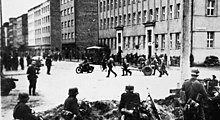
- Reinhard Heydrich explains his own views on the "Jewish problem" in Poland to leaders of the Sicherheitspolizei . [51] : 62
- The Polish submarine Orzel requests access to Tallinn in neutral Estonia, which it receives on 01:03, on the morning of 15 September. [27] : 34f.
- German troops carried out massacres in Moskwin and Olszewo, killing 30 Polish POWs and 32 civilians. [56] [57]
- Poland's gold reserve evacuated from Śniatyn to Romania. [29]
- The Soviet Kyiv Military District is ordered to achieve military readiness against Poland by 16 September. [26] : 135
15 September
16 September

- 4th Panzer Division attempts to cross the Bzura river to attack the Poznan Army in its German-encircled position, but is beaten back; Panzer Regiment 36 and SS Leibstandarte are temporarily trapped by Polish forces. [12] : 309
- German attackers are repulsed at Lwów. [7] : 124
- German troops perpetrated massacres in Bocheń, Guźnia and Retki, killing 49 Polish civilians. [59]
- Order No. 005 of the Soviet Minsk Military District is read out to Soviet troops, promising them the "liberation of Ukrainian and Belarussian workers from Polish landowners and capitalists". [26] : 125
17 September
- In the Soviet invasion of Poland , the Red Army intervenes in the German-Polish war on the German side, beginning its advance towards the German-Soviet demarcation line agreed in the Molotov-Ribbentrop Pact. [26] : 125
- Polish defense of Sarny against the Soviets begins. [60]
- Presidential proclamation of Ignacy Mościcki in Kuty. [60]
- Rydz-Śmigły instructs Polish units in eastern Poland to avoid combat with the Red Army as far as possible and to withdraw towards the national frontiers with Romania and Hungary. [26] : 126f.
- XV Corps (of 10th Army) crosses the Warsaw—Sochaczew road and further tightens the chokehold around Warsaw. [7] : 124
- German troops perpetrated massacres in Bąków, Henryków, Leszno in Mazovia, killing 144 Polish civilians, including women and children, whereas in Piekary Śląskie and Strzybnica in Silesia the German police and Freikorps executed 12 Polish civilians. [61]
18 September
- The main clashes of the Battle of the Bzura cease; OKH reports 120,000+ Polish prisoners from a total of 19 divisions and three cavalry brigades. [7] : 124
- Following Soviet pressure against the Estonian government, Orzel leaves Tallinn and begins its breakout towards the United Kingdom, which it would reach (without maps) on 14 October. [17] : 16
- Germans perpetrated a massacre of some 300 Poles, including POWs and refugees, in Śladów. [62]
19 September

- German forces complete the encirclement of Warsaw, ending what the Germans would subsequently dub the "Eighteen Days Campaign". [63] : 132
- Krakow Army attempts a breakout towards the Romanian frontier through Tomaszow Lubelski. [44] : 12
- Pomorze Army and Poznan Army are forced to surrender. [15] : Ch.III
- Wilno taken by the Soviets after the Battle of Wilno . [64]
20 September
- Army Group South is ordered to abort its attacks and to withdraw west of the Vistula-San line to make space for the advancing Soviets. The German siege of Lwów is aborted and left to the Soviets. A German attack against the city by XVIII Army Corps planned for 21 September is cancelled. [18] : 118
- Clashes between Polish and Soviet forces at Grodno (" Battle of Grodno "). [26] : 129
- German troops carried out a massacre of 42 Polish POWs in Majdan Wielki. [65]
- White Eagle Organization (Organizacja Orła Białego) Polish resistance organization founded on 20–22 September in Kraków. [66]
21 September
- Polish garrison of Lviv unexpectedly attempts surrender to the withdrawing Germans; [18] : 118 occupation of Lviv is left to the Soviets, who take the city after an artillery bombardment. [67] : 83
- Reinhard Heydrich issues a directive to begin the concentration of Poland's Jews in the major cities to prepare the formation of ghettos and to ease subsequent deportations to concentration camps. [51] : 62
22 September
- German–Soviet parade in Brześć. [12] : 307 [68]
- The Germans handed over Białystok to the Soviets in accordance with the Molotov–Ribbentrop Pact. [69]
- Soviets carry out arrests of Polish officers in Lwów despite previous agreements and guarantees of freedom and inviolability. [69]
- Polish General Józef Olszyna-Wilczyński executed by the Soviets in Sopoćkinie. [69]
- Polish Organization for the Struggle for Freedom (Polska Organizacja Walki o Wolność) Polish resistance organization begins forming in Lwów. [70]
- German troops carried out a massacre of 50 Polish POWs in Boryszew. [71]
- Soviets carried out a massacre of over 100 Polish POWs and 300 Polish civilians in Psia Górka. [72]
- Germans carried out the first mass execution of 88 patients of the Kocborowo psychiatric hospital at the Forest of Szpęgawsk. [73]
23 September
24 September
- Johannes Blaskowitz (of German 8th Army) orders the final assault against Warsaw. [14] : 314
- Appointed German Kreisleiter called Polish municipal officials in Bydgoszcz to a supposed formal meeting in the city hall, from where they were taken to a forest near Bydgoszcz and exterminated. [74] He also ordered the execution of their family members to "avoid creating martyrs". [74]
27 September
- Warsaw surrenders. [75] : 327 Polish general Tadeusz Kutrzeba meets with Johannes Blaskowitz to discuss the terms of surrender. [32] : 252
- In the early morning, the 19th Uhlans are ambushed by a Soviet tank column, but manage to repel the initial assault. [32] : 250
- 26th Uhlans and 27th Uhlans are surprised by strong Soviet armored formations (" Battle of Władypol ") and shatter. Small groups of survivors begin to fight their way to the Hungarian border, some 40km away. [32] : 250
- Service for Poland's Victory and Grey Ranks Polish resistance organizations founded. [68] [76]
28 September
- Soviet-Polish battle at Szack; 52nd Rifle Division and 411th Tank Battalion forced in temporary retreats by Polish defenders. [26] : 130
- Germany and the Soviet Union sign a Border and Friendship Treaty and adjust the frontiers of occupied Poland. The Soviet Union publicly blames the Western Allies for the continuation of the war. [77] : 233–236
- Germans carried out the second mass execution, this time of 16 patients of the Kocborowo psychiatric hospital, at the Forest of Szpęgawsk. [73]
- Soviets carried out a massacre of 18 Polish POWs from the Riverine Flotilla of the Polish Navy in Mokrany. [72]
29 September
- The Polish garrison of Modlin fortress surrenders at 08:00; the roughly 35,000 defenders (including 4,000 wounded) are released as agreed in the surrender agreement, though most officers are subsequently recaptured in the following weeks and detained in POW camps. [32] : 255
- Wounded General Władysław Anders taken prisoner by the Soviets. [64]
30 September
- General Sikorski forms a Polish government-in-exile in France. [9] : 676
October
1 October

- Around 02:00 at night, a Polish vanguard of the Border Protection Corps meets a column of Soviet tanks near Wytyczno and destroys four of them. As the BPC crosses the Bug river south of Włodawa to catch up with Independent Operational Group Polesie forces, a Soviet counterattack (" Battle of Wytyczno ") commences in the early morning. General Wilhelm Orlik-Rückemann decides to break up his force into small units and send them into various directions. Several massacres are subsequently committed by the Soviet pursuers against Polish groups of soldiers. [32] : 259f.
- After a final assault against Hel by the German Infantry Regiment 374 towards Hel, the Polish commander asks for an armistice around 14:00. [27] : 38
- At 14:30, the German mineseeker M85 is sunk by the Polish submarine Zbik with 23 lives lost, sole Polish submarine victory of the campaign. [27] : 39
- Ger. 10th Army is alerted to return to Germany to prepare operations against France.
- Germans carried out a massacre of 64 Polish men, including ten boys under the age of 18, in Szczuczki. [78]
- Polish Consul in Kyiv Jerzy Matusiński was summoned for supposed talks at the Representation Office of the People's Commissariat for Foreign Affairs, and then arrested by the Soviets, with his fate unknown to this day. [79]
2 October
- Command of the Defenders of Poland (Komenda Obrońców Polski) Polish resistance organization founded in Warsaw. [80]
3 October
- Gerd von Rundstedt becomes military commander in German-occupied Poland. [18] : 118
4 October

- The final clashes of the campaign erupt in the Battle of Kock . [18] : 119
- Adolf Hitler issues a general armistice for any war crimes committed by German troops during the campaign against Poland. [81] : 58
- German massacres of Poles in Paterek, committed as part of the Intelligenzaktion campaign begin. [82]
5 October
- The Germans hold the first of their victory campaigns in Warsaw, which is filmed by Leni Riefenstahl. [32] : 265
- Around 19:30, General Kleeberg (the commander of the last active Polish formations in the Kock sector) gives orders to cease fighting. [32] : 267
- The Germans carried out an execution of 39 Poles, defenders of the Polish Post Office in Gdansk in Zaspa. [83]
- On 5–6 October, the Germans perpetrated a massacre of Poles from Koronowo and adjacent villages at Buszkowo. [84]
6 October
- The final Polish resistance (around two divisions in strength, under General Kleeberg around Kock) surrender, ending the campaign. [7] : 123f.







